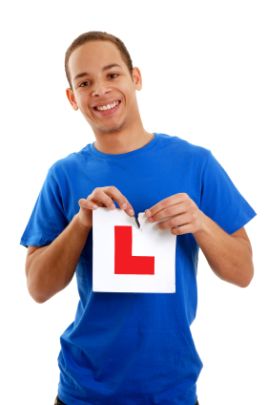Working out what a road sign means
There are many signs that you will see day in day out as a driver and are obvious to understand. For instance signs that tell you the maximum speed limit on the road you're on. For some reason, the no entry sign seems to be the one that is most recognisable for everyone.
However there are other signs that you won't know as you have never come across them, and some that you do know what they mean but forget.
But there are rules that can help you work out what a sign means, and this is particularly useful if you come across a sign in a theory test and have whittled it down to a couple of options but aren't sure. Sometimes knowing the rules outlined below can help you work out what the sign means:
First of all, if the sign is in a CIRCLE then this means that it is giving orders.
If the sign is in a TRIANGLE then it is giving a warning.
If the sign is in a RECTANGLE, it is giving information.
This simple knowledge can help you work out what a sign means. Now, within the above descriptions there are also colours that act as clues, and by combining the two you will have a good chance of working out what a sign means.
BLUE circles tell you things that you must do, whilst red rings tell you things that you must NOT do.
Blue rectangles give general information, green ones tell you route directions on primary roads, white with black borders give route directions on non-primary roads.
Related Articles...
The risk of accidents - some statistics
No-one wants to think that they will be involved in an accident, but being aware that an accident could happen to you and the statistics is important. Accidents happen to ordinary people, so anyone...
Tips on braking on snow and ice
Braking on snow and ice takes a lot longer than it does on a normal road in ordinary conditions. But you might be very surprised at how long it can take.
Infact tests have shown that it can...
Typical brake faults outlined
The brakes are a mechanical object and so it is possible that they will develop problems and not function the way that they should be. This is clearly very dangerous because brakes are one of the...
Tips on joining a motorway
Joining and leaving the motorway are generally considered the more tricky elements of the journey. When it comes to leaving the motorway, it is all about selecting the right exit and moving over to...
The Advanced Driving Test
There are advantages to continuing to study driving by means of a course like the advanced driving test, because it will help to give you the chance to develop your skills even further than you had...
Insurance for learner drivers
If you wish to learn to drive and you ever plan to use a private car then
you need to ensure the car you are going to use has the appropriate cover.
There are various levels of cover, the...
Watching others whilst on the road
You can't rely on other road users not to do something wrong. Whilst most articles on this site tend to focus on cars, there are other and particularly vulnerable road uesrs out there.
These...
Driving and Eyesight Requirements
If you require glasses in order to meet the requirements for driving legally, then you must ensure that you wear them whilst you drive (or corrective lenses).
There are some conditions that...
How to get your provisional driving license
In order to take the theory test, and ultimately the practical driving test, you will need to have a valid provisional driving license. Indeed you need the provisional license in order to be able...
Some common engine faults
It is beyond the scope of the articles here to go into detail about how the engine works and what the various parts of it are. For the theory test you won't need to know a great detail about the...
Back to home page of driving theory test questions

